Fourth grade art students are ready for new challenges, like trying out perspective or exploring tessellations. These projects are all well within their abilities but will also encourage your students to push themselves to create cool new works of art they’ll be proud to take home and show off!
1. Go colorful with Fauve portraits
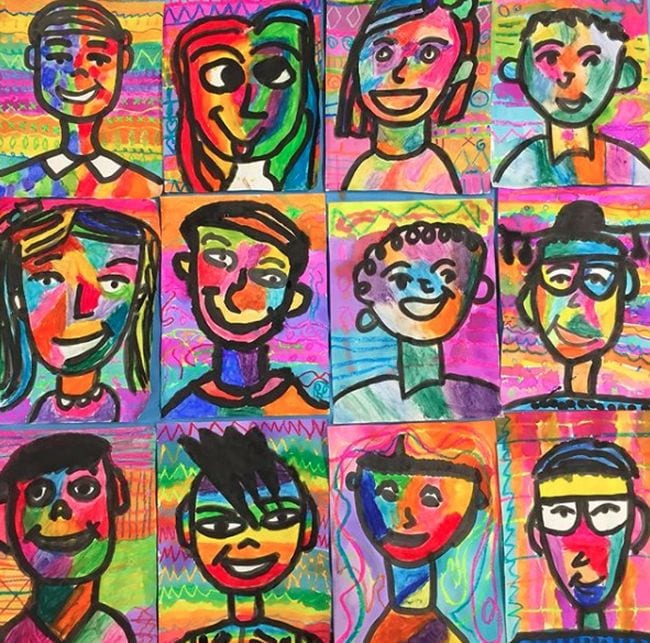
Artists of the Fauve school believed in bright colors and bold lines, so their work really appeals to kids. Use bingo daubers to make the portraits, then oil pastels and liquid watercolors to create the colorful backgrounds.
Learn more: Cassie Stephens/Fourth Grade Fauve Art
2. Fold zig zag selfies
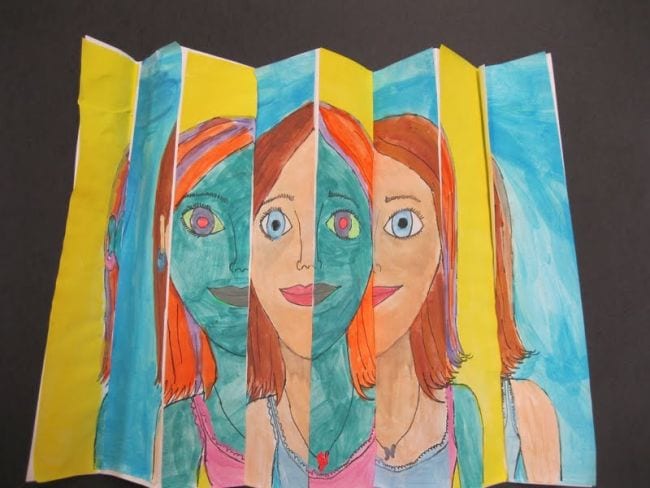
Your fourth grade art students will be wowed by the illusion of this portrait project. They’ll create two different pictures of themselves on accordion-folded paper. When they unfold it, they’ll be able to see each portrait depending on the angle they look from.
Learn more: The Art Room at The Falcon Academy of Creative Arts
3. Blend snowy silhouettes
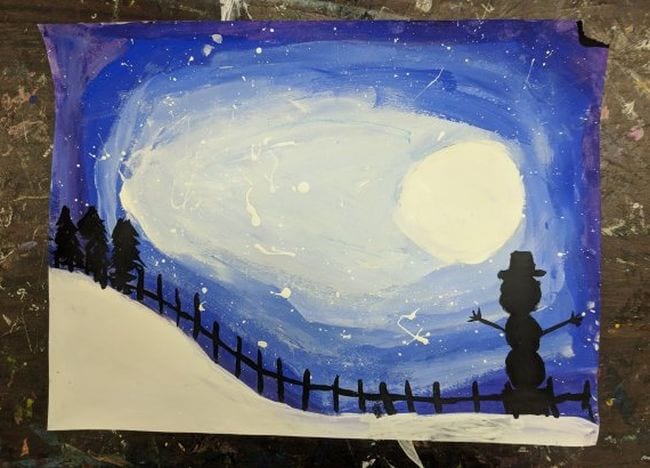
Learn to blend tints and shades with these winter landscapes, featuring full moons and silhouettes of trees, snowmen, and other wintry objects.
Learn more: tinyartroom
[contextly_auto_sidebar]
4. Learn the parts of a landscape

Teach your students terms like foreground, middle ground, and horizon as they create these patterned landscapes. They’ll also learn to use warm colors to make some elements pop and cool colors when they want something to recede into the background.
Learn more: Jamestown Elementary Art Blog
5. Sail mighty pirate ships
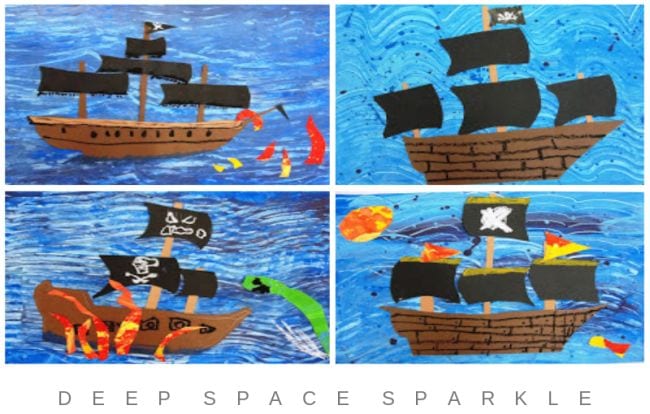
Students will have fun painting textured waves to back their fearsome construction paper pirate ships. Challenge them to personalize their sails with their own insignia too!
Learn more: Deep Space Sparkle
6. Add texture with glue

Aluminum foil makes a really cool canvas for art projects. Use school glue to “draw” insect art, then fill in the colors with Sharpies.
Learn more: Denette Fretz
7. Put your students in The Scream

Munch’s The Scream is one of the most well-known pieces of art out there. Learn more about the original painting, then have kids paint their own backgrounds. Finish it off by taking “scream selfies” and pasting them on!
Learn more: Art With Mrs. Seitz
8. Make Dean Russo-inspired animals

Dean Russo’s vivid pet portraits have become incredibly popular, and they’re exactly the kind of style that appeals to kids. This is another fourth grade art lesson that’s perfect for using bingo daubers to make the bold outlines.
Learn more: Elements of the Art Room
9. Assemble colorful seahorses

These dreamy seahorses are made using bleeding tissue paper to achieve the soft watercolor effect. When you glue them onto black construction paper, the colored panels practically seem to glow.
Learn more: The Crafty Classroom
10. Turn book pages into a seascape

Collect some old textbooks and turn them into bounding ocean waves! Dab the torn pages with watercolors, then add boats of various sizes to create the illusion of depth.
Learn more: Mrs. Jackson’s Art Room
11. Try a toothpaste batik

The traditional batik process involves wax, but this version uses a surprise substitute: toothpaste! Learn how it works at the link.
Learn more: Art is Basic
12. Sculpt figures from foil

Turn a box of aluminum foil into cool sculpted figures! After your students make their figures, have them draw and shade the shadows the figures make.
Learn more: Mrs. Knight’s Smartest Artists
13. Craft radial paper relief sculptures
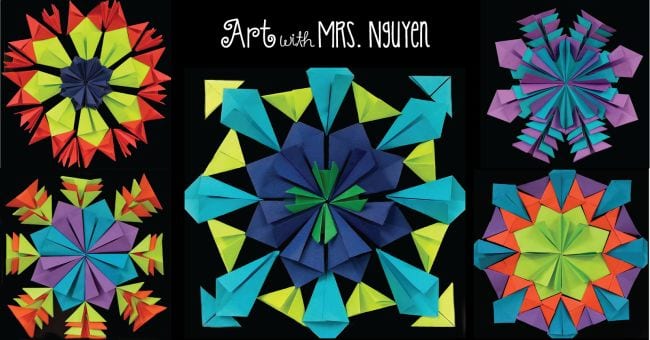
Explore the concept of radial symmetry with this intriguing folded paper project. Visit the link below to learn some basic folds, but don’t be afraid to try out creative shapes of your own.
Learn more: Art With Mrs. Nguyen
14. Sew giant pizza pillows

Every kid loves pizza, so they’ll love the chance to sew their own enormous pizza pillows! Choosing and designing the felt toppings will be their favorite part of this simple sewing project.
Learn more: Cassie Stephens/Fourth Grade Pillow Pizza
15. Mix paint for giant Hokusai waves

Japanese artist Hokusai is best known for his series of woodblock prints of Mount Fuji, including The Great Wave off Kanagawa. Fourth grade art students will enjoy mixing acrylic paints to get the proper shades to recreate this iconic marine scene.
Learn more: Kim & Karen: 2 Soul Sisters
16. Draw Escher-inspired tessellations

Get ready to see your students’ eyes widen when you show them M.C. Escher’s mind-bending illustrations. Then challenge them to create their own tessellations, which are repeating patterns that cover a page with no gaps or overlaps. It’s tricky, but oh-so-satisfying!
Learn more: Art With Mrs. Seitz
17. Put together free-fall foreshortening art
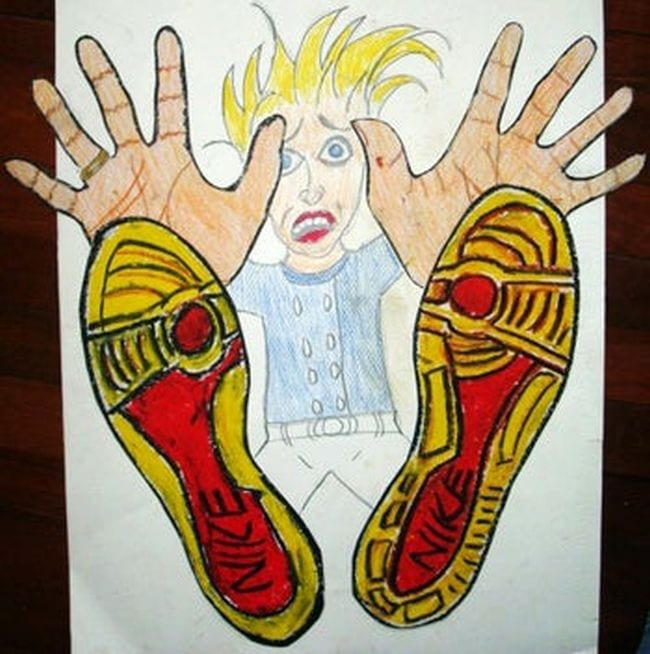
Fourth grade art students are ready to tackle some more advanced concepts, like foreshortening an object to produce the illusion of distance. These free-falling portraits emphasize hands and feet, creating an interesting, foreshortened perspective.
Learn more: Education.com
18. Write typography self-portraits
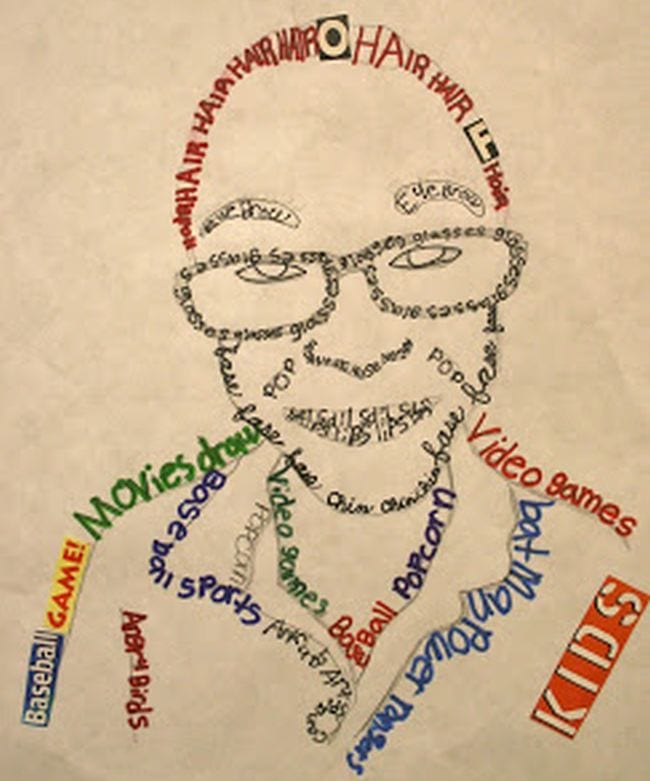
Make some time in your curriculum for graphic arts like typography. This self-portrait is a combination of poetry and art, and the results are truly special.
Learn more: Flying Crayons
19. Shade close-up dragon eyes

Your fourth grade art students will develop a whole bunch of new skills with this project, including shading, wet-on-wet watercolors, crayon resist, and more. Plus, those dragon eyes are simply mesmerizing!
Learn more: Art With Mrs. Kerbaugh
20. Cut out Dubuffet sculptures
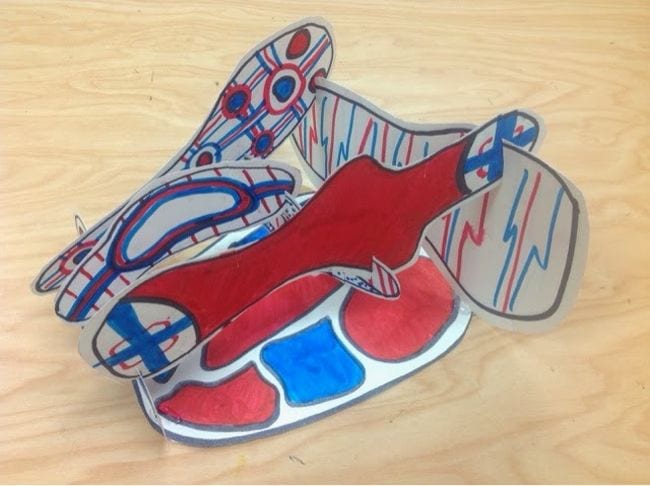
Dubuffet took great inspiration from watching kids create, eventually coining the term art brut, sometimes called outsider art. After looking at some of his work, ask kids to use paper to make a free-flowing abstract sculpture of their own.
Learn more: The Art Room
21. Split and share circles

Collaborative art projects give kids a chance to work together and share their creativity. For this one, each student creates one Kandinsky-inspired circle and cuts it into four pieces. Then kids mix and match with each other to put together unique compositions.
Learn more: Kandinsky Inspired
22. Outline and paint 3D gems

Use the magic of crystals and gems to inspire students for this watercolor project. Show them the basic steps, then let them compose their own valuable collections.
Learn more: Elements of the Art Room
23. Dive deep for undersea sculptures
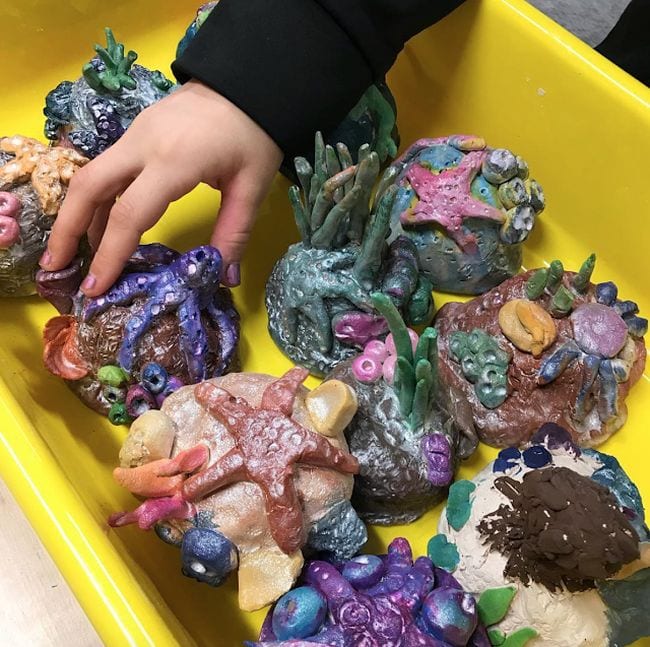
Everything’s better under the sea, including these gorgeous clay sculptures. Use photos of tide pools to inspire fourth grade students to mold starfish, urchins, seaweeds, and more.
Learn more: Nic Hahn
24. Create a shape explosion

Here’s another lesson in perspective, this one focusing on the vanishing point. For a personalized twist on this idea, have kids sketch the letters of their name instead of using shapes.
Learn more: Mrs. Knight’s Smartest Artists
25. Float away with dandelion puffs
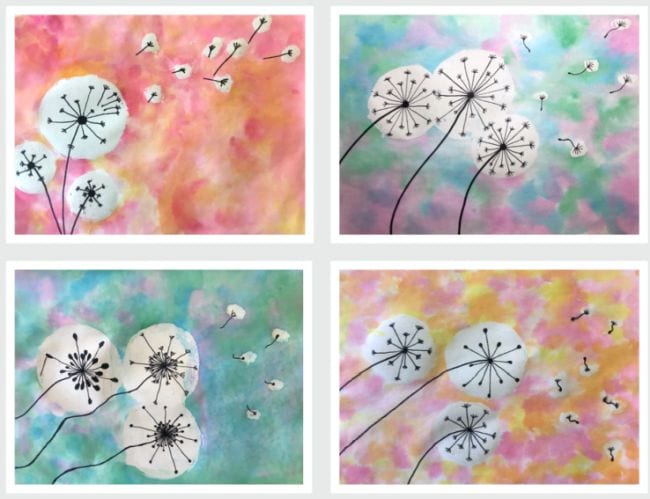
One look at these paintings, and you’ll feel like you’re sitting in a sunny meadow on a warm summer’s day. Kids use the wet-on-wet technique to create those soft misty backgrounds.
Learn more: Art With Mrs. Fillmore
26. Snack on papier-mâché donuts

These donuts look yummy, but don’t be tempted to take a taste! Instead, drop by the post below for some donut art inspiration, then shape your own sweet treats from papier-mâché.
Learn more: Wow Art Project
27. Look down on birds-eye view snowmen
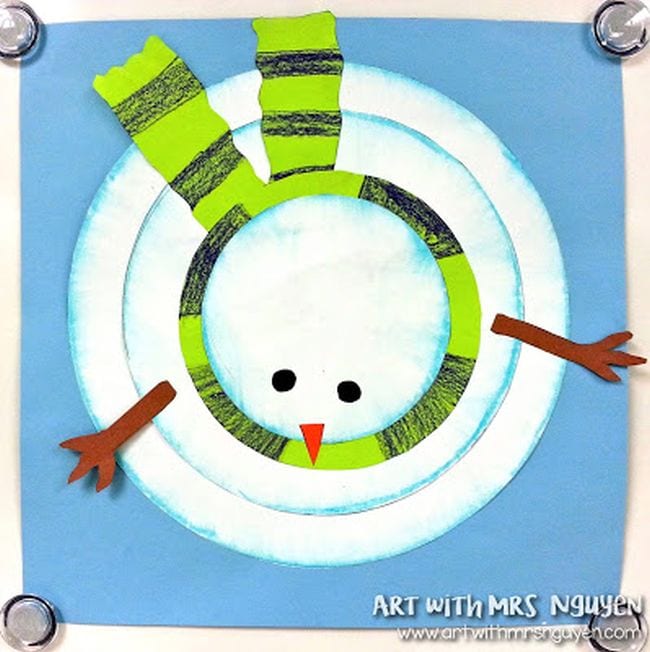
Viewed from the top, snowmen are just a series of concentric circles. Practice shading to add depth to each circle, then add a scarf, arms, and snowman features to finish it off.
Learn more: Art With Mrs. Nguyen
28. Explore indigenous art with totem poles

Make this art lesson meaningful by learning why and how some Native American tribes make totems. Then have each student choose an animal that’s important to them, and build your own class totem poles.
Learn more: Welcome to Art Class
29. Construct clay castles
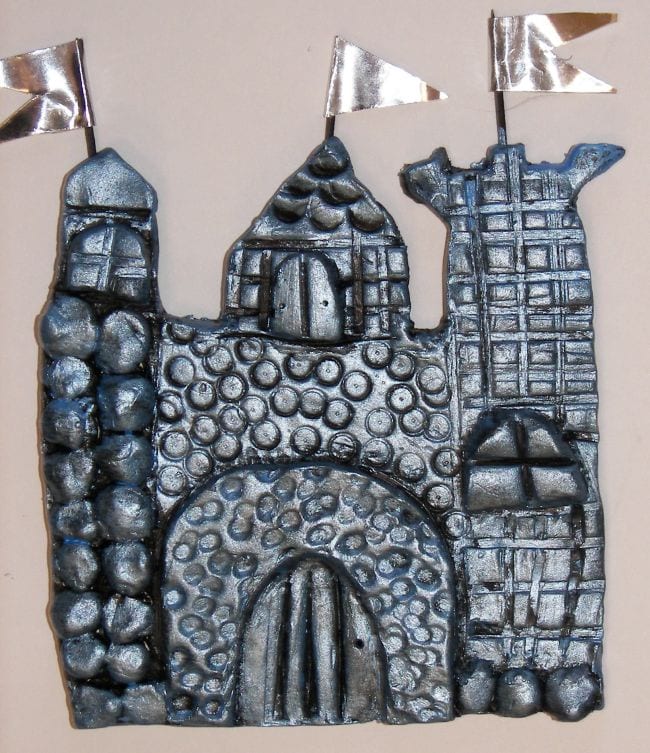
Have some royal fun with these textured clay castles! Metallic glazes and glittering pennants make this a project that really shines.
Learn more: K-8 Art
30. Stitch and paint on burlap
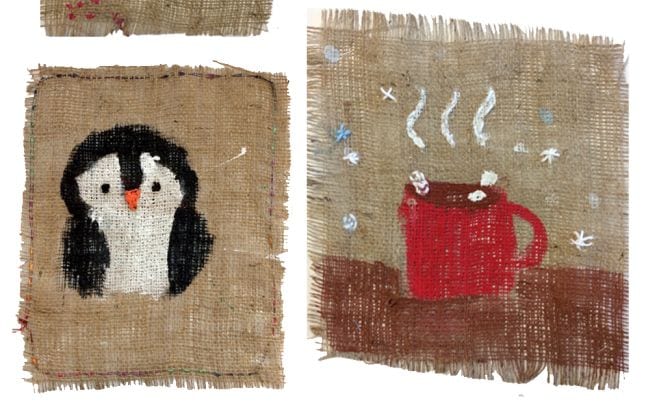
Here’s a project that’s likely different from anything kids have tried before. First, paint a design on burlap. Then, stitch on some embellishments with colored thread. The results are unique and awesome!
Learn more: Art is Basic
Keep the creativity flowing with these 50 Creative Fourth Grade Writing Prompts.
Want more articles like this? Subscribe to one or more of our newsletters!


